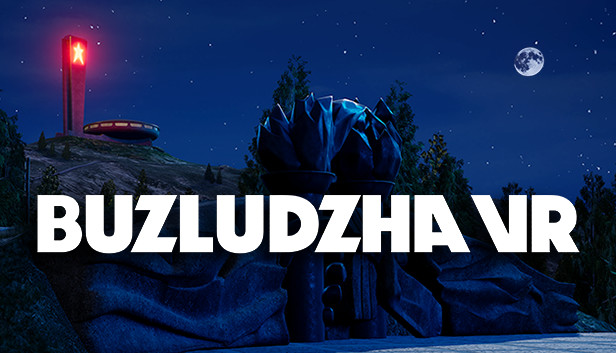
Explore a reimagined version of the abandoned Buzludzha Monument in Central Bulgaria. Sense the scale of the megastructure and take in the atmosphere of the surrounding landscape.
From the product description for Buzludzha VR
Say what you will about the Communists, not all of their architecture was industrial and uninspired. The Brutalist architecture they often employed resulted in many depressing apartment and office buildings, but sometimes it produced a look that crossed over from ugly to cool. By the 70’s, they were producing buildings that were still imposing, but used sweeping lines and unconventional angles to present abstract interpretations of objects like boats and flying saucers, along with creative geometric designs. The Buzludzha Memorial House featured in Buzludzha VR was built as the home of the Bulgarian Communist Party with construction beginning in 1974 and seeing use until 1989. The interior has fallen into bad disrepair, though there are efforts to restore it. In the meantime, you can experience the scale of it and see images of its former glory, including many of the beautiful murals, through the magic of VR. Continue reading for more details.
About the Buzludzha VR Experience
You start Buzludzha VR on the grounds of the monument, a little distance away from the flying saucer building. There are some worn roads around you, but it’s clearly an isolated region surrounded by rolling hills. It’s a beautiful area really. Trees abound, and you can see windmills in the distance generating power. Ahead of you is a sculpture with hands holding torches.
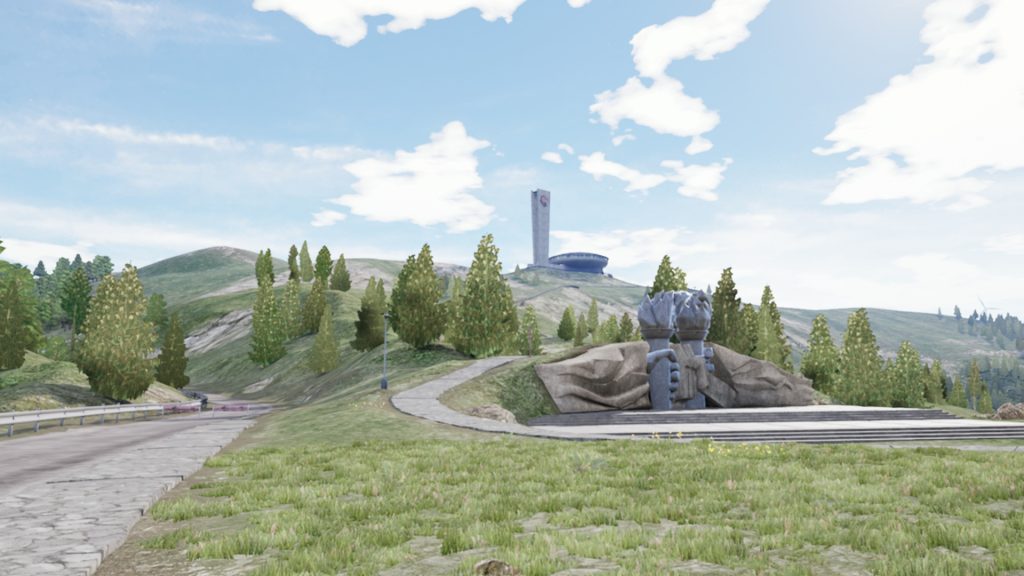
Before you ascend the hill, you can walk around the empty roads, wander through the grass, or even climb down the roadside a bit. Looking at the top of the main hill you can see the 70ft tower and spaceship-shaped building that is the actual monument.
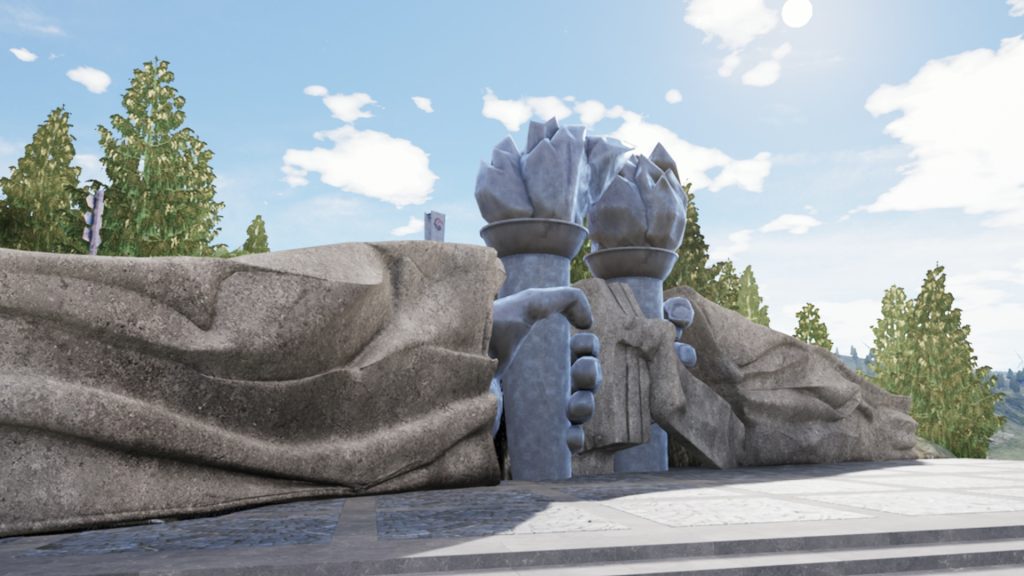
The sculpture is carved out of the massive rock serving as the backdrop of what was likely a raised platform for speeches or events back in the day. The overall complex was built to celebrate the Communist party in Bulgaria and was very popular for their activities along with general tourism due to its remarkable shape and location.
You can either use smooth locomotion (gliding) or teleport in the direction you choose. As I have a weak stomach, I used the teleport feature. You can go 10-15ft at a time. The path to the top takes a few jumps to get there, but the views along the way are quite nice.
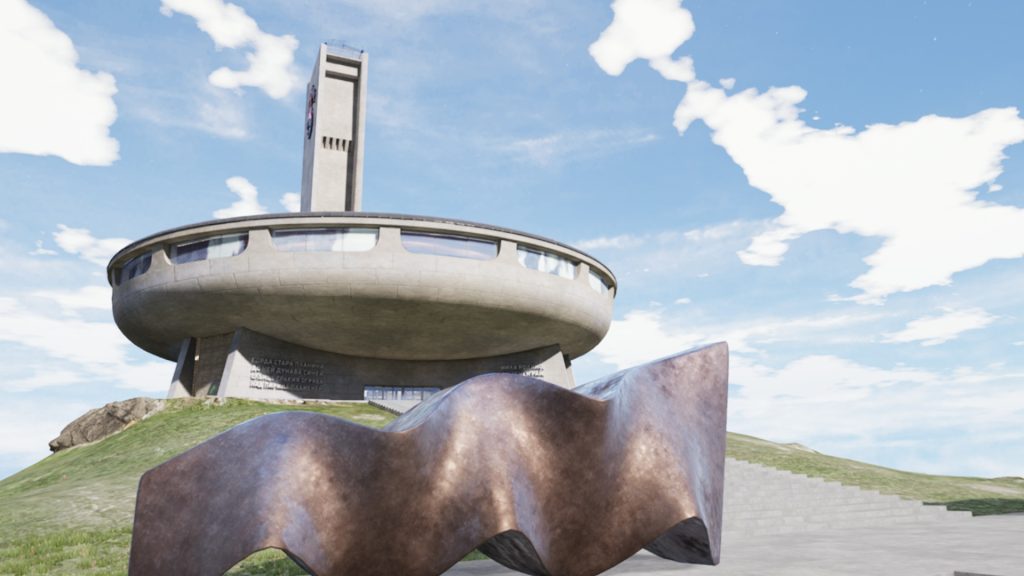
Once inside, you can hang out in the main lobby and learn about the history of the place, head over to the concessions area (which also leads to the tower elevators), or take the stairs to the upper area. There are a few small rooms leading off from various hallways including bathrooms, a conference room, and a security booth.
In the upper saucer part, you can walk around the outer ring with the windows. From the right direction, you can see the tower. Large murals/mosaics line the ring. In the middle of the saucer is a large open area with arena-style seating. In between the outer ring and the open inner area is a corridor lined with photos of the current state of the building and small models.
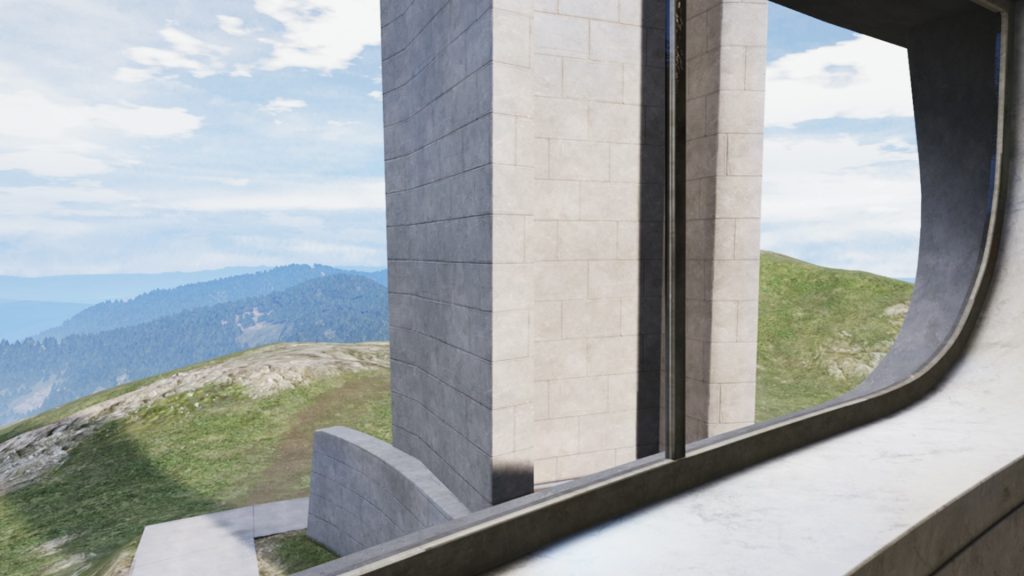
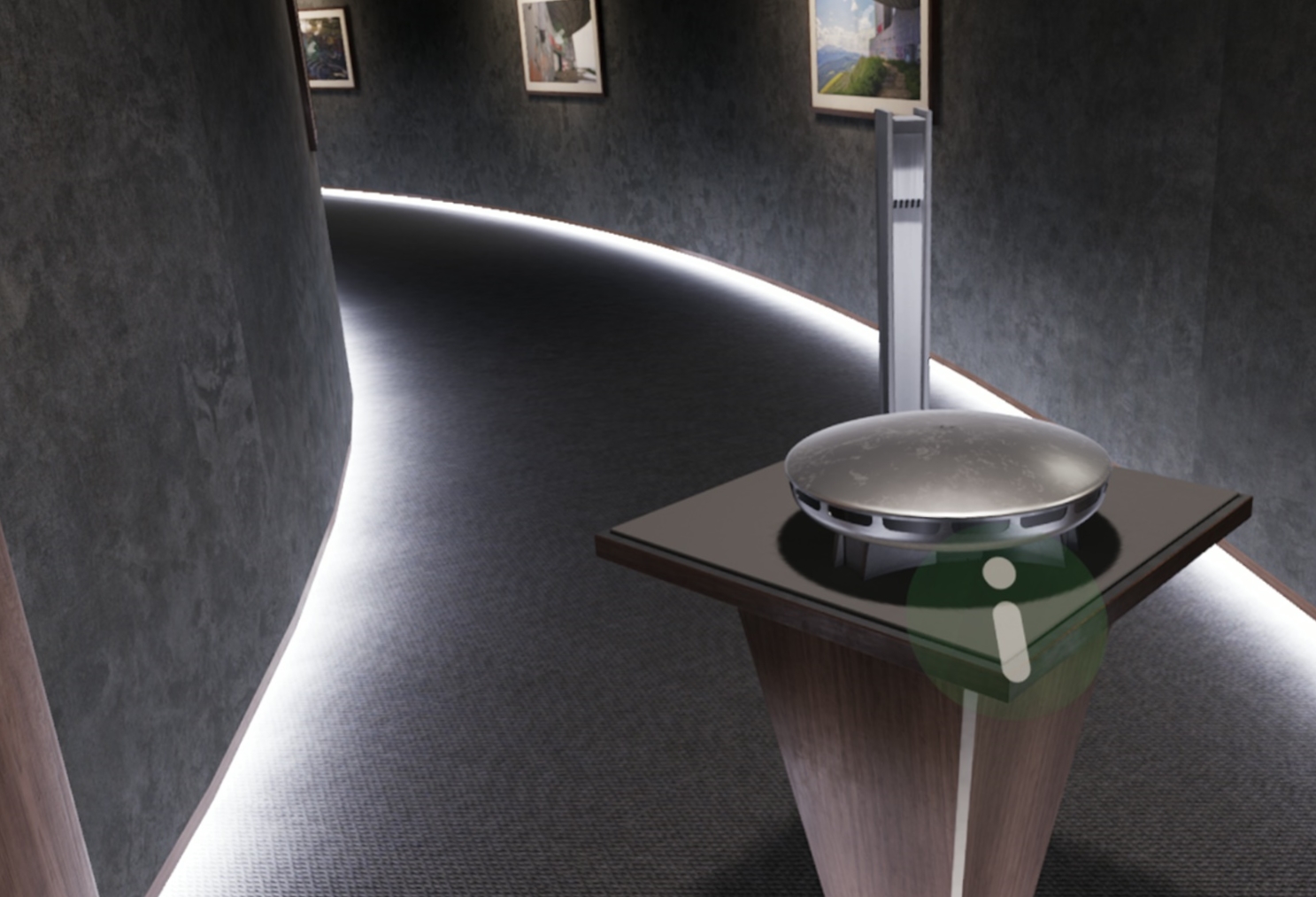
The inner-most room would have been a great venue for performing. It’s easy to imagine all sorts of music being performed here, or perhaps award ceremonies. Several hundred people could have been seated with direct views to the completely open stage in the center. I really loved the artwork gracing the walls of this room and it would have been quite marvelous to take in back in the day.
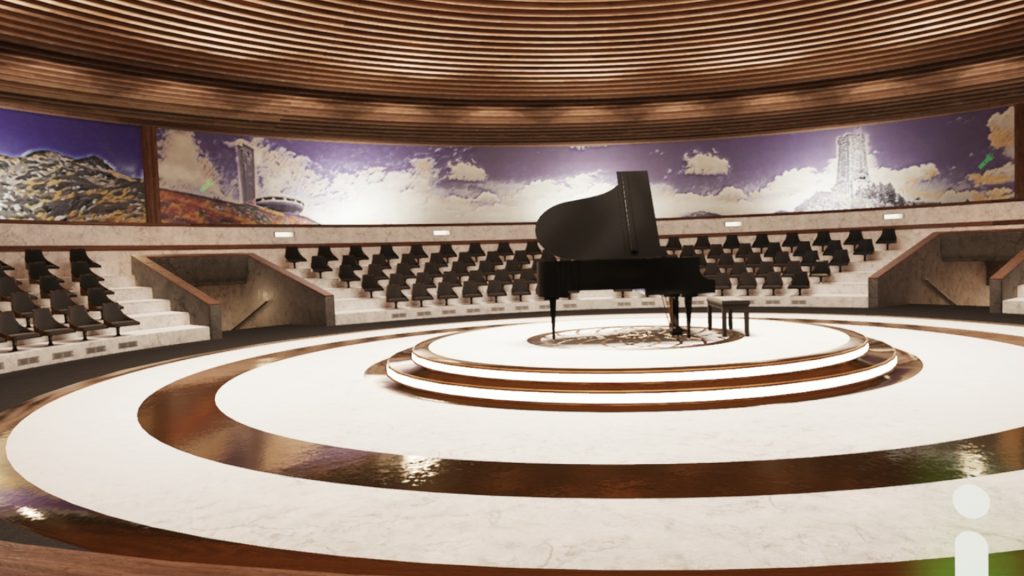
Graphics
Graphics are great. It’s a very well-done recreation of the sculptures and architecture of the place. You can walk around everything from all sides, even looking at some of the graffiti on the outside of the building. Unlike many immersive experiences like this, the location is created by a 3d artist rather than from taking thousands of photos for photogrammetry. It can be faster to create from scratch since photogrammetry requires so many images followed by a large amount of effort processing them, but you rarely get the same level of detail the photographs would have provided. For Buzludzha, since the current state of the location is in ruins, photogrammetry wouldn’t be very useful.
In addition to the landscape and the structures, the developers also did a great job simulating day versus night for a very different look. You can only change time of day by climbing the tower, but once changed, you can wander wherever you’d like. Take notice of the outside of the tower at night for a nice effect.
Information
There are a number of spots with the letter “i” within a circle. Either touch or stand on the spot to learn something about the room or the view. There are many well-written snippets of info, sometimes switching between current and original state so you can see how it has changed.
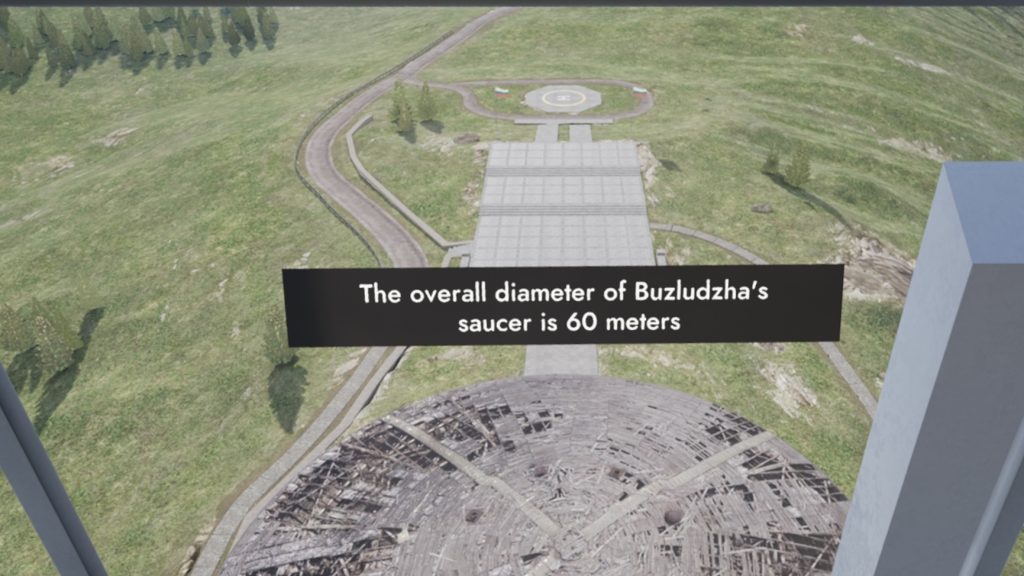
I also like the museum area where you can look at photos showing current state. If you touch the photo, you are transported to the spot in the reconstruction where you can look around. It’s too bad that the building has fallen into such disrepair, although I know there are some efforts underway to preserve it.
Interactivity
One of the big differences from past to present is the state of the murals on some of the walls. They were really beautiful and worth seeing. The reconstruction shows them in their original state, but you can shine a flashlight (once you find it) to reveal the current degraded state.
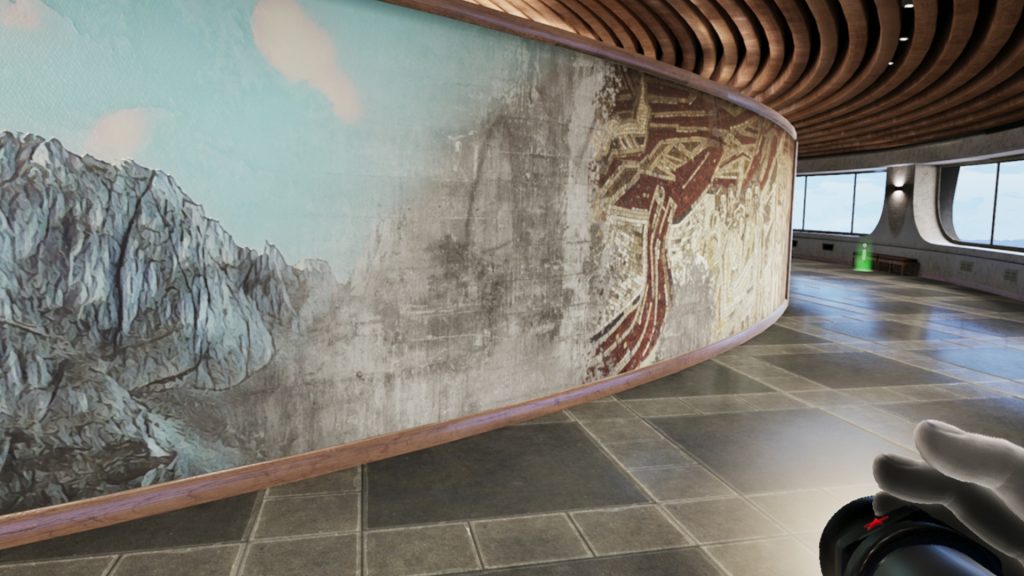
From the cafe area, you can pick up baked goods and cups to throw around. It’s a fun touch and provides a few minutes of amusement before continuing your visit. If you come across the bottle gun, I highly recommend going literally everywhere to shower the place with broken glass and red wine. I never knew how much I wanted a bottle gun until now. I don’t know where the idea came from, but its time has come.
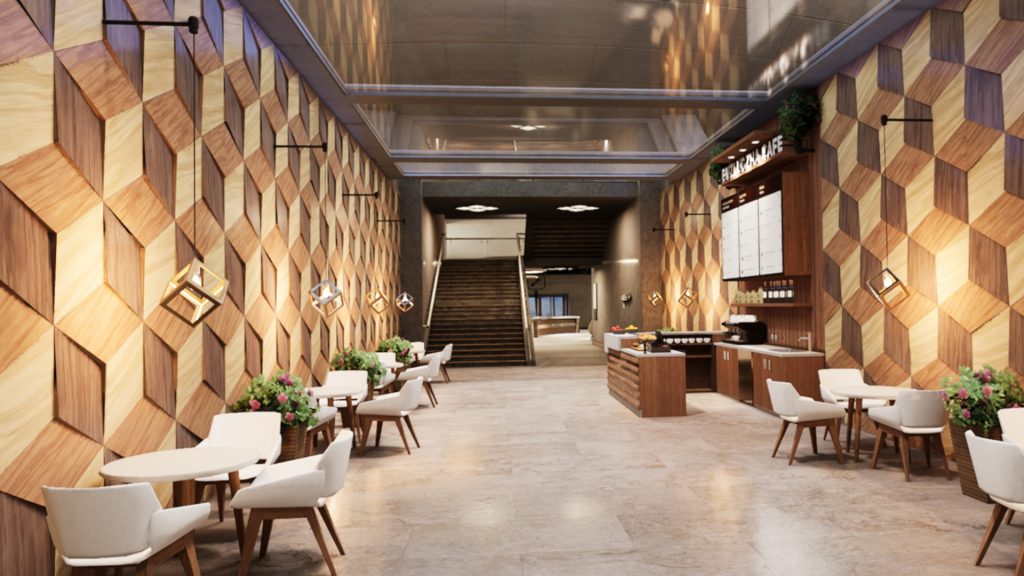
As you walk around, you can find various objects such as the flashlight to shine at murals, a fire extinguisher, traffic cones, and a walkie-talkie. If you find the walkie-talkie, it will summon the helicopter. Yes, the helicopter! Not only do you get to walk all around the area, but you can also fly over it to get a whole different view. It’s not really a helicopter simulator, so I don’t think you can crash. It’s just a fun thing to try. Flying in the air is a little easier for my stomach than flying closer to the ground, but I was still a little queasy a few times.
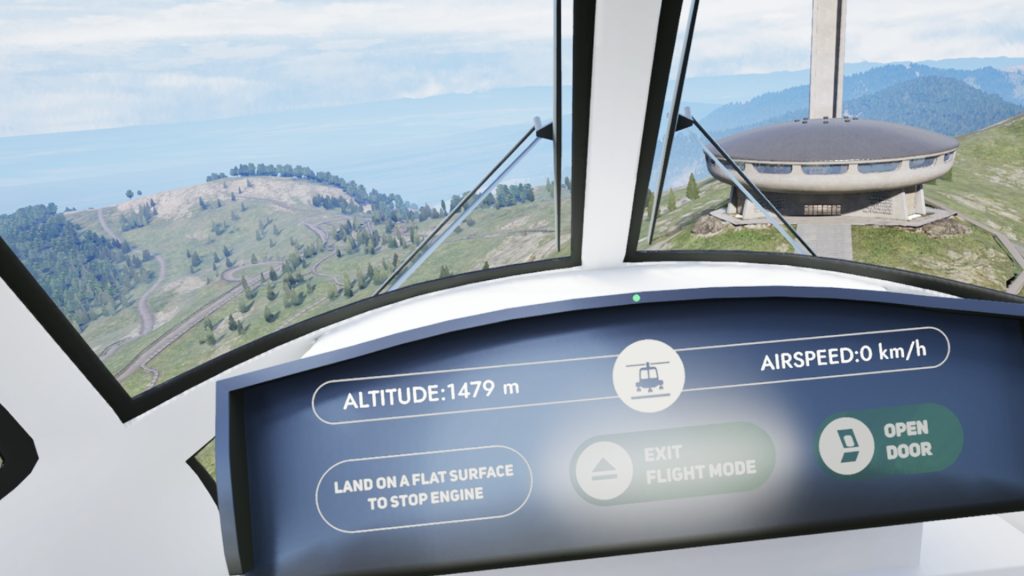
From the menu, you can change various graphics and control settings or use the Fast Travel menu to jump directly to twelve different spots. This is a really nice touch. To access the menu or your inventory (the items you are carrying), tap on the device on your left wrist. I’ve said it before, I greatly prefer when apps take advantage of VR to augment your body or surroundings with controls and information. The alternative is to just remember something like “press button X for menu” which you almost certainly won’t remember when you need it.
Future Potential
The app received a sizable update six months after release, but nothing since. Since this is a static location, I don’t expect there will be further updates anytime soon. That said, it’s a solid title and doesn’t really need any updates.
Summary
Pros
- Interesting location
- Good use of VR to switch between current and past
- Nice selection of interactive elements
Cons
- Inability to shoot bottles from the helicopter 😉
I’m very impressed by this effort. It looks like it might just be two people who did most of the work. It’s a noteworthy location with a unique history. I love the attention to detail regarding the current and original state, and the interactive touches are lots of fun — something I’d like to see more of in apps like this. I highly recommend this to anyone interesting in exploring old buildings, especially relating to former Soviet regions. Take a look and let us know what you think!

